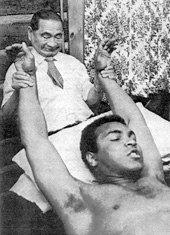
3 minute read
THE HEALING TOUCH
THE HISTORY OF SHIATSU
Written By Joe Miller
The History of Shiatsu in Japan Shiatsu, which translates to “finger pressure,” is a form of therapeutic bodywork from Japan that has roots in traditional Chinese medicine.
The history of Shiatsu in Japan is a fascinating journey of cultural exchange, adaptation, and innovation. Origins and Chinese Influence The foundations of Shiatsu can be traced back to ancient China, where Traditional Chinese Medicine (TCM) practices such as acupuncture and acupressure were developed.
These practices were based on the concept of Qi (or Chi), a vital energy that flows through pathways in the body known as meridians.
The goal was to balance the flow of Qi, thus ensuring health and well-being.
Introduction to Japan These Chinese healing practices were introduced to Japan between the 6th and 9th centuries through the exchange of cultural, religious, and medical knowledge. Over the centuries, the Japanese adapted and refined these practices, integrating them with their own traditional healing techniques and philosophies, such as those found in Anma (traditional Japanese massage).
Development of Shiatsu In the early 20th century, Shiatsu began to emerge as a distinct form of massage therapy under the influence of practitioners like Tokujiro Namikoshi.

Namikoshi developed a system of bodywork that focused on using finger and palm pressure to correct imbalances in the body, improve circulation, and facilitate the healing process.
Namikoshi founded the first school of Shiatsu therapy in the 1920s, and his methods gained recognition as a licensed therapy in Japan in 1955.

Another notable figure in the development of Shiatsu is Shizuto Masunaga, who introduced the concept of Zen Shiatsu. Masunaga expanded on traditional Shiatsu techniques, incorporating more holistic approaches that emphasized the psychological and spiritual aspects of healing, alongside the physical.
Shiatsu offers a range of benefits for individuals, both physically and mentally.

Here are some of the key benefits to shiatsu: on a patient
• Stress Reduction: Shiatsu can help to reduce stress and anxiety by promoting relaxation and reducing the body’s production of stress hormones.
• Pain Relief: It is effective in managing pain, including neck, back, and joint pain, by improving circulation and reducing muscle stiffness.
• Improved Circulation: The pressure applied during Shiatsu massage helps to stimulate blood flow, which can speed up the recovery from injuries and enhance overall health.
• Enhanced Well-being: Shiatsu can contribute to a sense of well-being and happiness by balancing the body’s energy flow, which, according to traditional Asian medicine, is essential for health and vitality.
• Boosted Immune System: Regular Shiatsu sessions can help to boost the immune system by stimulating the lymphatic system, helping the body to fight off illness.
• Improved Sleep: By promoting relaxation and reducing stress, Shiatsu can also help improve sleep quality.
Shiatsu is a holistic approach to health that treats the body as an interconnected system. It aims not just to treat specific ailments but to improve overall health and well-being. As with any therapeutic practice, the benefits of Shiatsu can vary from person to person, and it’s always recommended to consult with a healthcare professional before starting any new treatment.











